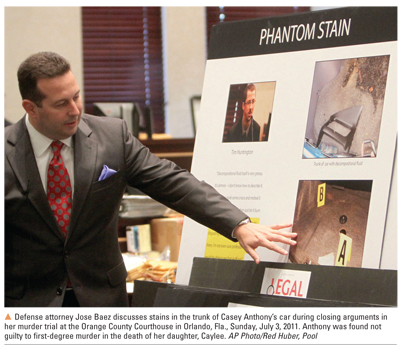 “There is no scientific proof that fingerprint identification is 100-percent certain.”
“There is no scientific proof that fingerprint identification is 100-percent certain.”
That was the conclusion of one of the FBI's own fingerprint analysts cited on a recent PBS Frontline story about the “real CSI.” In fact, much of what passes in criminal courts as “expert testimony” is little more than semi-educated guessing, with the exception of DNA evidence, which is scientifically based.
“It isn't like what one sees on the television dramas,” the program's reporter advised, telling the story of a Portland, Ore., attorney, who just happened to be Muslim, who was arrested and held in jail because his fingerprint matched—according to the experts—that of one of the terrorists that blew up a commuter train in Atocha Station in Madrid. He was being prepared for prosecution when an Algerian was arrested in Spain for the bombing, based on the same fingerprint. And where is the scientific evidence that no two fingerprints are identical? The same place as the evidence that no two snowflakes are identical: in modern mythology.
Recommended For You
Want to continue reading?
Become a Free PropertyCasualty360 Digital Reader
Your access to unlimited PropertyCasualty360 content isn’t changing.
Once you are an ALM digital member, you’ll receive:
- Breaking insurance news and analysis, on-site and via our newsletters and custom alerts
- Weekly Insurance Speak podcast featuring exclusive interviews with industry leaders
- Educational webcasts, white papers, and ebooks from industry thought leaders
- Critical converage of the employee benefits and financial advisory markets on our other ALM sites, BenefitsPRO and ThinkAdvisor
Already have an account? Sign In Now
© 2025 ALM Global, LLC, All Rights Reserved. Request academic re-use from www.copyright.com. All other uses, submit a request to [email protected]. For more information visit Asset & Logo Licensing.








